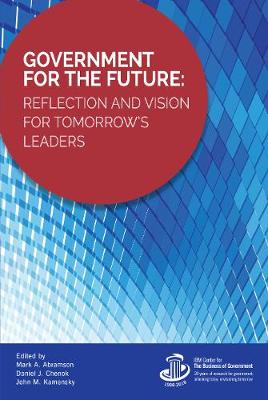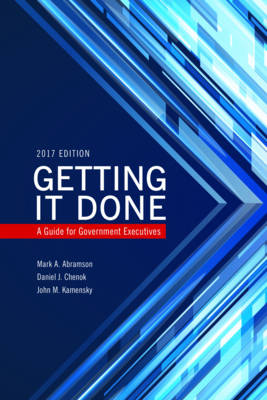IBM Center for the Business of Government
3 total works
The Operator's Manual for the New Administration
by Mark A. Abramson, Jonathan D Breul, John M. Kamensky, and Martin G. Wagner
Published 7 July 2008
The Operator's Manual for the New Administration explains how government works and how to make it work to advance policy goals and objectives. Bringing decades of experience in government administration, the authors have identified eight key tools-leadership, performance, people, money, contracting, technology, innovation, and collaboration-that executives must utilize in order to be successful.
Government for the Future
by Mark A. Abramson, Daniel J Chenok, and John M. Kamensky
Published 3 September 2018
In recognition of its 20th anniversary, The IBM Center for the Business of Government offers a retrospective of the most significant changes in government management during that period and looks forward over the next 20 years to offer alternative scenarios as to what government management might look like by the year 2040. Part I will discuss significant management improvements in the federal government over the past 20 years, based in part on a crowdsourced survey of knowledgeable government officials and public administration experts in the field. It will draw on themes and topics examined in the 350 IBM Center reports published over the past two decades. Part II will outline alternative scenarios of how government might change over the coming 20 years. The scenarios will be developed based on a series of envisioning sessions which are bringing together practitioners and academics to examine the future. The scenarios will be supplemented with short essays on various topics. Part II will also include essays by winners of the Center's Challenge Grant competition. Challenge Grant winners will be awarded grants to identify futuristic visions of government in 2040.
Contributions by Mark A. Abramson, David A. Bray, Daniel J. Chenok, Lee Feldman, Lora Frecks, Hollie Russon Gilman, Lori Gordon, John M. Kamensky, Michael J. Keegan, W. Henry Lambright, Tad McGalliard, Shelley H. Metzenbaum, Marc Ott, Sukumar Rao, and Darrell M. West.
Contributions by Mark A. Abramson, David A. Bray, Daniel J. Chenok, Lee Feldman, Lora Frecks, Hollie Russon Gilman, Lori Gordon, John M. Kamensky, Michael J. Keegan, W. Henry Lambright, Tad McGalliard, Shelley H. Metzenbaum, Marc Ott, Sukumar Rao, and Darrell M. West.
Getting It Done was written for those who have answered the call to public service. Now, in this 2017 edition, the editors of IBM's Center for The Business of Government series have assembled a comprehensive guide to navigating the current environment of government, and what government leaders ought to know to survive and thrive with respect to the ways it's evolved over the years. Concise analyses of the roles and responsibilities of those involved in any political decision accompany informative and instructional chapters, each highlighting a key step any public servant must take to ensure they do all they can for the people and causes they represent. From the patient and careful study of an issue, to the assembly of a trusted advisory team and the development and execution of a focused vision and agenda, leaders of all kinds will find some part of this book to incorporate into their own leadership strategies, for which this book's expert and pragmatic insights prove a refreshing boon.


